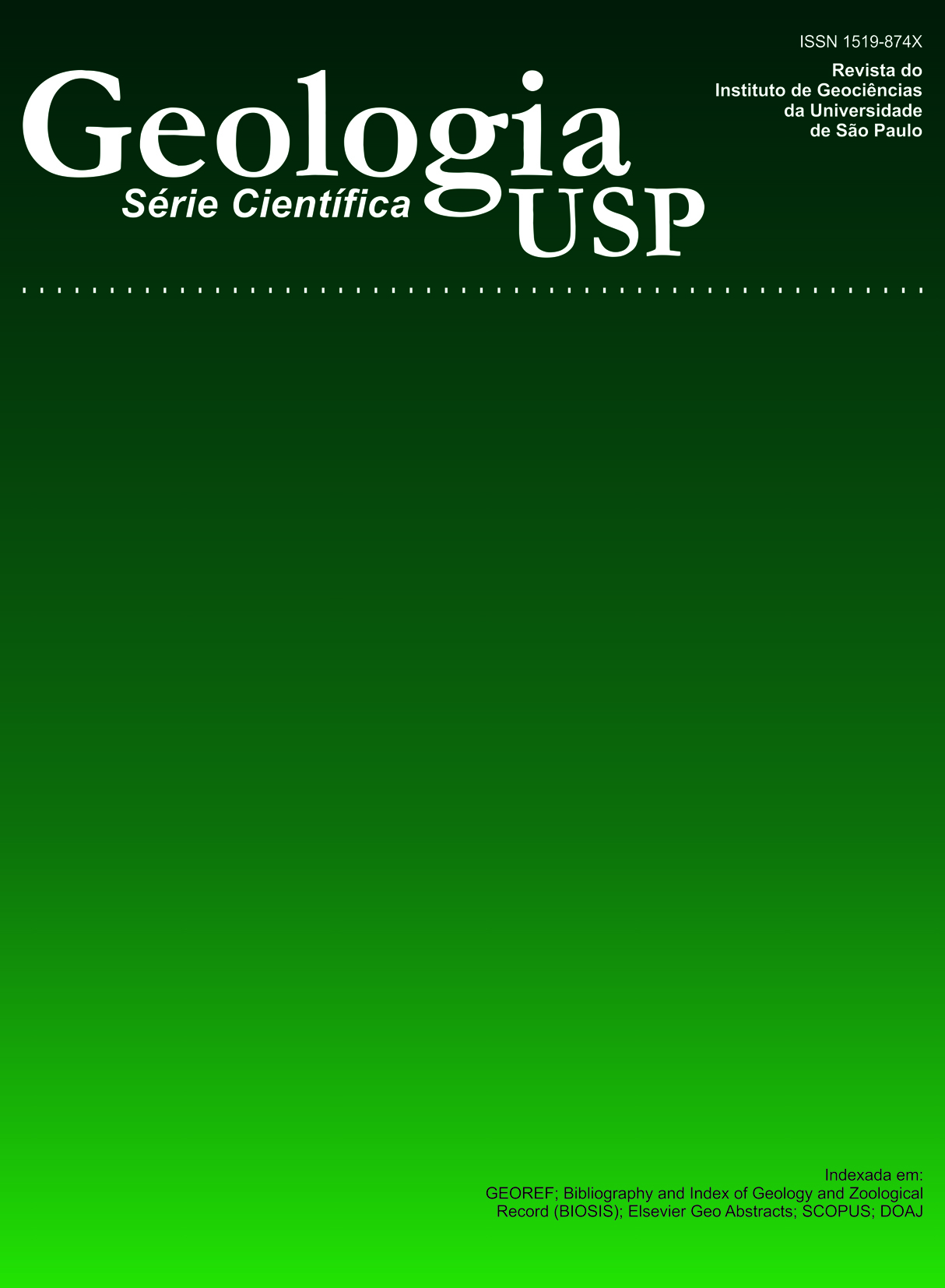Geological setting, isotope studies (C, O and Pb) and associated metals in the Tocantinzinho gold deposit, Tapajós domain, Tapajós-Parima Province
DOI:
https://doi.org/10.5327/Z1519-874X2013000100008Keywords:
Tapajós Province, Granitoids, Gold mineralization, Metallic suite, Radiogenic and stable isotopesAbstract
The Tocantinzinho ore deposit is located along a NW-SE-trending lineament, southwestern of Itaituba (Pará, Brazil), and is the largest known gold deposit of the Tapajós Province. The host Tocantinzinho granite is essentially isotropic and dominated by syenogranites and monzogranites that have been weakly to moderately altered by hydrothermal fluids. Microclinization (earliest), chloritization, sericitization, silicification and carbonatization (latest) are the main types of alteration. Most mineralization was contemporaneous with the sericitization/silicification and is represented by sulfide- and gold-bearing veinlets which locally occur as stockwork. Pyrite, chalcopyrite, sphalerite and galena are the most common sulfides. Among the ore metals, Cu, Pb and Zn present the highest contents, but Mo, As and Bi locally show anomalous concentrations. The relationship of Au with Cu, Pb or Zn is at random and the Au/Ag ratios range from 0.05 to 0.5. The higher the sulfide contents, the higher the Au concentrations, though it occurs mainly included in pyrite. Zircon monocrystals from the Tocantinzinho granite yielded an average Pb-Pb age of 1982 ± 8 Ma and may represent an earlier event of the Creporizão magmatic arc. δ13C PDB values for calcite from the carbonatization stage fall dominantly between -3.45 and -2.29‰, being compatible with a deep crustal source that may include carbonatite reservoirs. In turn, δ18O SMOW values vary from +5.97 to +14.10‰, being indicative of magmatic derivation, although the less positive values suggest contribution from surficial waters. Unpublished fluid inclusion study reveals the presence of aquo-carbonic fluids, whose CO2 could have been dissolved in the granitic magma rather than being related to the shear zone. The available data allow the Tocantinzinho deposit to be classified as a granite-hosted, intrusion-related gold deposit.Downloads
Download data is not yet available.
Downloads
Published
2013-03-01
Issue
Section
Articles
License
Authors who publish in this journal shall comply with the following terms:
- Authors keep their copyright and grant to Geologia USP: Série Científica the right of first publication, with the paper under the Creative Commons BY-NC-SA license (summary of the license: https://creativecommons.org/licenses/by-nc-sa/4.0 | full text of the license: https://creativecommons.org/licenses/by-nc-sa/4.0/legalcode) that allows the non-commercial sharing of the paper and granting the proper copyrights of the first publication in this journal.
- Authors are authorized to take additional contracts separately, for non-exclusive distribution of the version of the paper published in this journal (publish in institutional repository or as a book chapter), granting the proper copyrights of first publication in this journal.
- Authors are allowed and encouraged to publish and distribute their paper online (in institutional repositories or their personal page) at any point before or during the editorial process, since this can generate productive changes as well as increase the impact and citation of the published paper (See The effect of Open Access and downloads on citation impact).
How to Cite
Villas, R. N. N., Santiago, Érika S. B., & Castilho, M. P. (2013). Geological setting, isotope studies (C, O and Pb) and associated metals in the Tocantinzinho gold deposit, Tapajós domain, Tapajós-Parima Province . Geologia USP. Série Científica, 13(1), 119-138. https://doi.org/10.5327/Z1519-874X2013000100008





